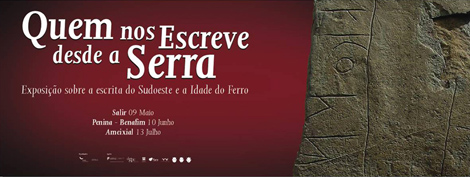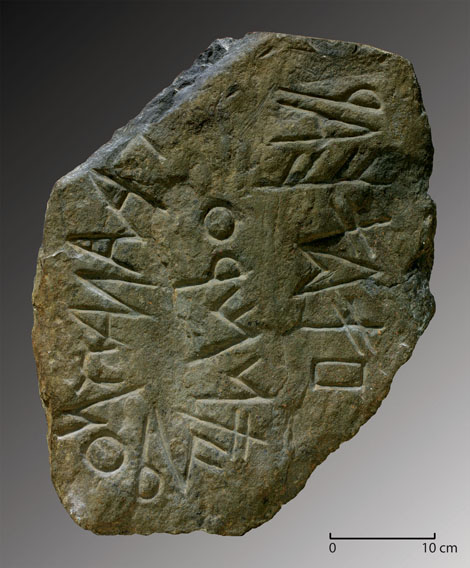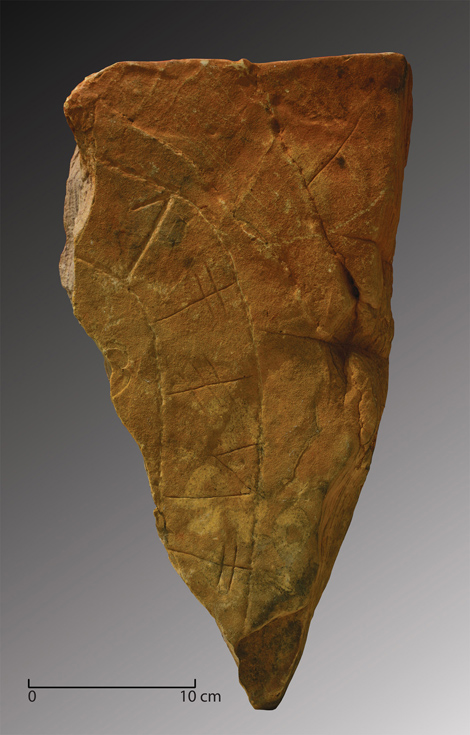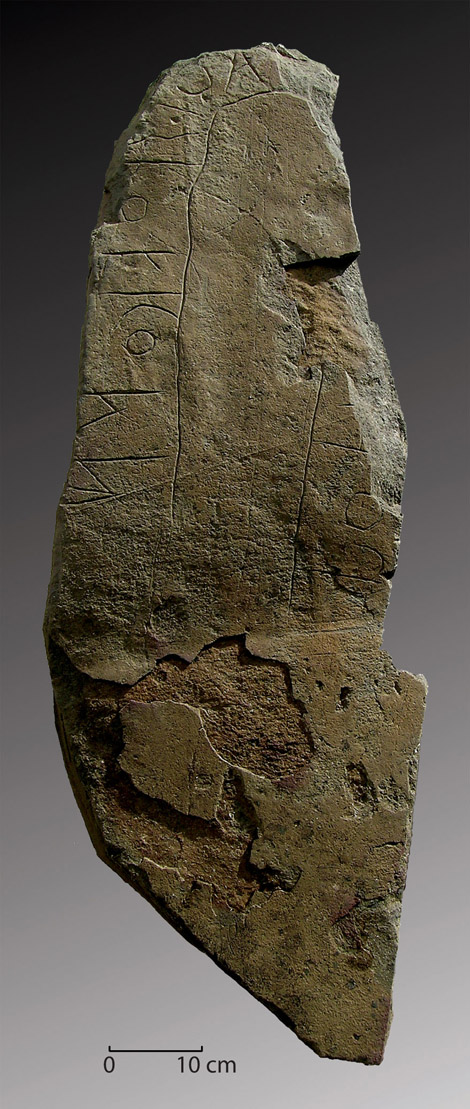 The traveling street exhibition «Who writes us from the Serra», which has as its theme the stelae with writing from the Southwest and the Iron Age in the Algarve mountains, will be inaugurated in Salir, on May 9th, at 18 pm, and will be on display to the public until the 00th of June.
The traveling street exhibition «Who writes us from the Serra», which has as its theme the stelae with writing from the Southwest and the Iron Age in the Algarve mountains, will be inaugurated in Salir, on May 9th, at 18 pm, and will be on display to the public until the 00th of June.
Within the scope of this exhibition, it will also be exposed to the public, in the Salir Museum and for the first time, the stele with Southwest writing found in Viameiro (Salir).
The exhibition will then be presented at Penina-Benafim (June 10th to July 10th) and will end at Ameixial (July 13th to August 18th).
 The writing of the Southwest is a historical reality of exceptional nature, a hallmark of the mountain range and a privileged symbol of the Algarve's historical heritage, as it is the oldest written manifestation of the Iberian Peninsula that, even today, is still to be deciphered.
The writing of the Southwest is a historical reality of exceptional nature, a hallmark of the mountain range and a privileged symbol of the Algarve's historical heritage, as it is the oldest written manifestation of the Iberian Peninsula that, even today, is still to be deciphered.
In the Iberian Peninsula, more than 2500 years ago, at a time of great technological innovations and cultural transformations, the peoples of southern Portugal and Andalusia, using the Phoenician alphabet from the Eastern Mediterranean, created a script specific to the language spoken in the region: the writing of the Southwest.
Concentrated in the Algarve mountains, there are few traces of this writing, around a hundred, and most are found on stelae: stone blocks fixed to the ground, where the text was engraved and written in an arch, in the opposite direction to ours: from below to up and from right to left.
It is in this region that authors of Classical Antiquity refer to the existence of especially cultured and developed people. According to Strabo (a Greek historian and geographer from the XNUMXst century AD) “they have a grammar and writings from ancient memory, poems and laws in verse”.
The spatial distribution of the stelae, in the current Portuguese territory, indicates that the mountains of Mú and Caldeirão, between the Algarve and Baixo Alentejo, are one of the epicenters of this phenomenon. Here, two sets can be identified, one to the south, in the transition between the Serra and the Barrocal, between Benafim and Salir, where the stelae of Fazenda das Alagoas, Viameiro and Barradas were found and that with the stelae found in Bensafrim (Lagos) and São Bartolomeu de Messines (Silves) trace the southern limit of the concentration of stelae with writing from the Southwest.

And the other, to the North, around the Vascãozinho, Vascanito and Vascão streams, confirming this site with one of the three main concentrations of this type of epigraphic remains, which includes archaeological sites today located in Loulé and Almodôvar.
The first fragment of a stele with writing from the Southwest of the Municipality of Loulé was found in 1897. More than a hundred years later, the identification of these epigraphic monuments is due to the precious contribution of countless Loulés, researchers and lovers of archeology, such as the Prior de Salir, José Rosa Madeira, José Viegas Gregório, Isilda Martins and Victor Borges.
They are also joined by researchers such as Ataíde de Oliveira, José Leite de Vasconcelos, Manuel Gómez de Sosa, Caetano de Mello Beirão, who contributed to the identification of ten stelae divided into the sets of Benafim/Salir and Ameixial and to the investigation of writing of the Southwest.
The writing of the Southwest is the voice that brings us closer to the thoughts and ways of life of the past, one of the mysteries and one of the greatest treasures of European archeology, an exceptional archeological reality, a hallmark of this mountain range and a privileged symbol of heritage historic area. It is, after all, the first written manifestation of the Iberian Peninsula and one of the oldest in Europe, which is still to be deciphered today.
It is now intended to disclose the archaeological materials from the municipality of Loulé and make known the research carried out on this period, writing, the way of life and death.
The exhibition is designed to show how this phenomenon results from a historical and heritage process and will interact not only with the public spaces of the localities, but also with the surrounding spaces, as the mountain landscape is the environment where these cultural values are revealed .
Located on public streets, the exhibition presents well-illustrated written contents and is organized in six parts: the Iron Age, the writing of the Southwest, the world of the living, death, researchers and the sets of stelae of Benafim/Salir and of the Plum.

Within the scope of this exhibition, the following actions will take place in parallel: in Salir, the Viameiro stele (Salir) will be presented for the first time to the public at the Museological Pole, in Penina-Benafim, the Barradas stele temporarily returns to the parish of origin and in the Ameixial will be presented with a replica of Corte Pinheiro's stele, one of the stelae of that set.
The contents are succinct and focused on transmitting the main ideas, in a contemporary and creative discourse that satisfies more than one type of visitor, that is, it cuts across age groups, levels of knowledge and degrees of interest.
It was also ensured that the exhibition does not have access and time constraints, providing the visitor with a short visit time. It should also be noted that this is bilingual (Portuguese and English), allowing visitors to understand the contents across borders.
The exhibition is part of a collaboration between the Municipality of Loulé and the ESTELA Project. This project is concerned with transforming the scientific knowledge acquired in strengthening the identity of people with their heritage and creating with this information a cultural landscape.
Born in 2008, its first objective is to systematize the information on stelae written in the Southwest, through the characterization of the contexts, material culture and territory of archaeological sites in the Algarve and Alentejo mountains, contributing to the revision and production of knowledge about the society that lived there, in the middle of the 1st millennium BC.
The exhibition is part of a collaboration between the Municipality of Loulé and the ESTELA Project and also has the support of the Regional Directorate of Culture of the Algarve, the Parish Council of Ameixial, the Parish Council of Benafim, the Parish Council of Salir, the Municipal Museum of Faro, the General Directorate of Cultural Heritage and the National Archeology Museum.

















Comments